La broderie Redwork a une grande histoire datant de la fin du XIXe siècle. It is a simple style of “;art needlework”; dans lequel le motif est décrit sur un fond blanc ou blanc cassé avec une couleur contrastée de fil. De nos jours, Ce point est communément appelé backstiching ou couture de contour.
Quand ce style est devenu populaire, rouge fil était la couleur la plus simple à obtenir. C'était aussi Colorfast, meaning it would not wash or “;bleed”; sur un tissu blanc. Turkey Red est le nom d'une teinture naturelle qui est devenue populaire en Amérique du Nord au milieu du XIXe siècle. D'autres colorants sont devenus disponibles autour 1875 et a fourni une gamme de couleurs plus complète, toutefois, Ils se faneraient. Le fil rouge turc était plus cher mais cela en valait la peine à cause de sa couleur. Depuis 1910 à 1930, Un fil bleu teint était populaire. Aujourd'hui, Nous continuons à utiliser le fil rouge avec ce style de broderie, Comme la couleur rouge contraste bien avec le fond léger.
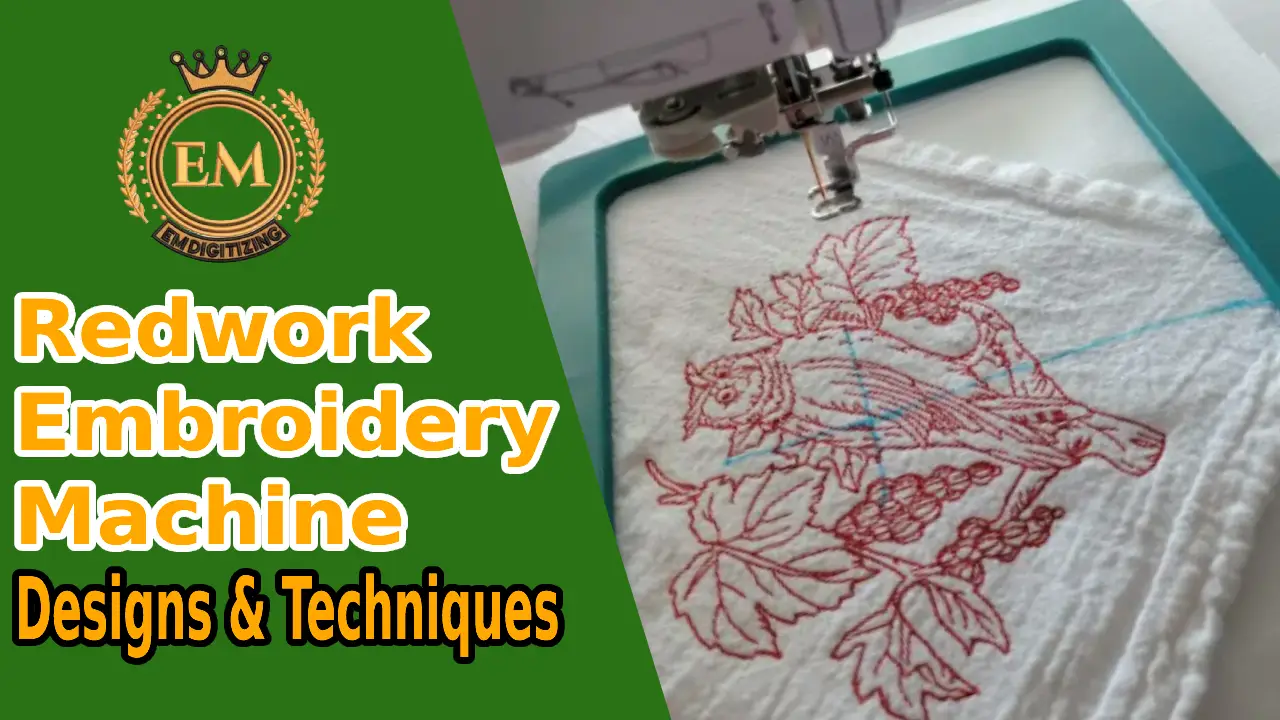
Services de numérisation de broderie
Qu'est-ce que la broderie Redwork?
La broderie Redwork est une ancienne forme de broderie qui peut être retracée en Europe de l'Est au début du 19e siècle.
Le fil a été teint en rouge et a été le premier fil de coton coloré utilisé dans la broderie, Avant cette couleur fil était en soie et ne pouvait être utilisé que par les riches.
Ce type de broderie était populaire car moins de fil était nécessaire pour créer conception de broderie. Il a également été très rapide pour développer une conception. En plus de ces facteurs, Le faible coût signifiait que la broderie Redwork se propage rapidement à d'autres parties du monde.
Quels points utilisez-vous dans la broderie Redwork?
La broderie Redwork utilise très peu de points, Ce qui le rend idéal pour les apprenants de broderie. Redwork motifs de broderie sont décrits avec des zones peu ou pas remplies. Par conséquent, Les modèles de broderie Redwork gratuits sur cette page sont rapides et faciles à compléter!
Le point principal utilisé dans la broderie Redwork est le point de tige, il est également connu sous le nom de plan ou de point arrière. Comme Redwork motifs de broderie sont décrits, c'est le point le plus souvent utilisé.
Les autres points incluent un point de satin, qui est utilisé pour remplir les petits espaces dans une conception. Il y a aussi des coutures divisées, et les nœuds français sont utilisés pour ajouter de petits détails à la broderie Redwork. Cette page est pleine de ressources pour apprendre les points de base utilisés dans la broderie Redwork!
Technique de broderie Redwork
Assez avec la leçon d'histoire! Comment faisons-nous réellement Redwork? À cause de sa simplicité, Redwork est un excellent point de départ pour les nouveaux fabricants d'aiguille et les jeunes artistes d'aiguille. Les cinq types de points sont faciles à apprendre, Et vous suivez simplement les lignes du motif imprimé.
- UN Point courant trempe de haut en bas du tissu, Créer une ligne comme une courtepointe. L'objectif est de placer des points uniformément espacés pour démontrer des compétences.
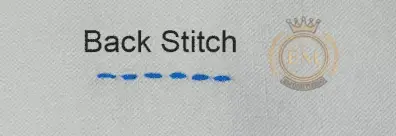 UN Point arrière est une série de points uniformes, généralement travaillé de droite à gauche, menant du dernier point, puis de retour à l'ouverture du point précédent.
UN Point arrière est une série de points uniformes, généralement travaillé de droite à gauche, menant du dernier point, puis de retour à l'ouverture du point précédent.
- La Point de tige travaille de gauche à droite. Encore, avec même les points, ceux-ci se nichent pour créer une ligne continue. Le fil a été placé sous l'aiguille.
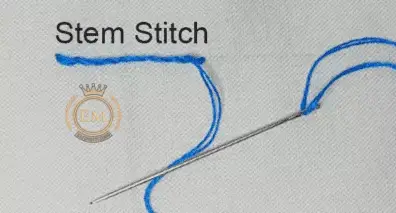
- La Point de ligne est similaire au point de tige, Mais le fil est placé sur l'aiguille.
- La Kensington Stitch est ce que ma mère appellerait un point fendu. Depuis que le fil arrive 6 volets, vous pouvez utiliser 2, 4, ou 6 volets. La Floss se divise, creating little hearts or “;eyes of the needle.”; Ce point était le plus difficile à maîtriser parce que je devais compter les bandes, Mais ça devient plus facile.
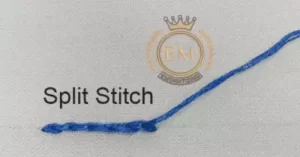
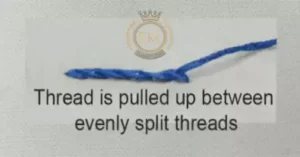
Modèles de broderie Redwork
La plupart des motifs étaient très faciles à coudre. Animaux, fleurs, jouets, Et les enfants sont tous des thèmes populaires. Des photos de bâtiments célèbres et de gens ont également été cousus, ainsi que des livres d'histoires animés et des personnages de comptines. Les éditeurs de magazines ont donné des échantillons pour promouvoir les abonnements. À mesure que l'équipement est devenu plus facilement disponible, Parfois, ils offraient des kits. Wealthy women used the images as models in children’;s coloriages et autres publicités.
Tissu d'estampage - transfert des conceptions sur le tissu - est devenu une source de revenus pour de nombreuses femmes. Certains fabricants ont embauché des tampons professionnels, Et certaines femmes ont fait ce travail de côté à domicile. Autour 1870, Les transferts ont été développés sur le fer. L'utilisation d'un fer chaud était un moyen facile d'appliquer le motif au tissu.
Des carrés préimprimés prêts pour la broderie ont été vendus. Leur valeur réelle est à peu près un sou, so they were commonly called “;penny squares”;. Ces carrés ont été brodés et cousus ensemble dans des couches ou des courtepointes. en outre, Les enfants ont reçu des carrés de sou pour apprendre et pratiquer la broderie à main.
Conceptions de broderies de la machine Redwork
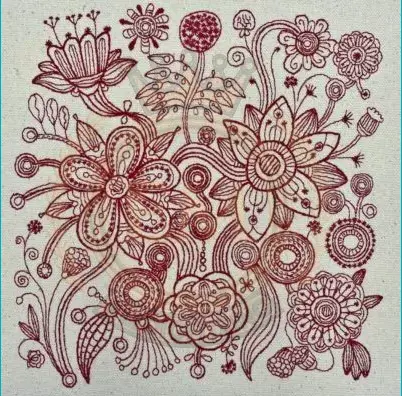
Comme pour toute technique de broderie, Toutes les conceptions de broderie ne sont pas créées égales. Lorsque vous utilisez des conceptions sur votre Machine à broder, Vous voulez vous assurer qu'ils se dérouleront en douceur et ne ruineront pas votre vêtement.
Nous vous recommandons de toujours utiliser un conception de broderie que vous savez vous donnera les meilleurs résultats. Numérisation is sure to always give you the best results as our redwork designs are of the best quality and personally digitized by the world’;s Nigitizer le plus acclamé.
Avec des centaines de conceptions de broderies Redwork à choisir, we’;re sure there’;s une conception de broderie Redwork pour répondre à vos besoins créatifs. Vous pouvez voir bon nombre de nos émdigitation Motifs de broderie par en cliquant ici.
Numérisation de conceptions de broderies de machines Redwork personnalisées
Logiciel de broderie éclos a un paramètre Redwork conçu pour donner exactement deux passes pour créer un point uniforme de Redwork traditionnel. Honnêtement, it’;s convaincant, Et il offre la capacité, avec pratique, à numériser lettrage à la main et reproduire des conceptions.
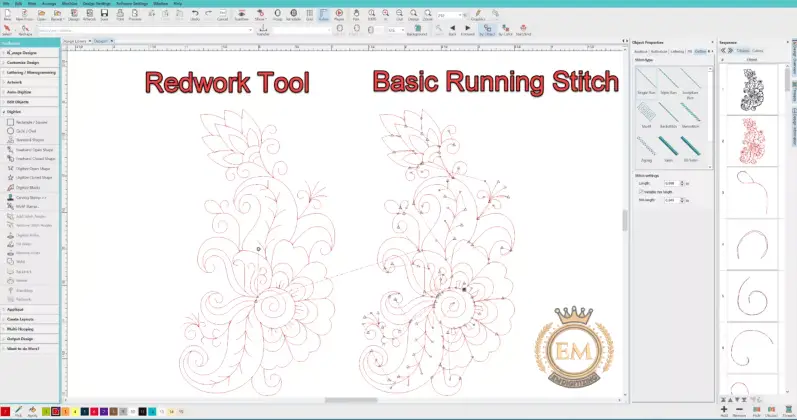
Cela semble trop beau pour être vrai? It’;s pas, Mais cela vous oblige à être un peu détective. Le Redwork doit être acheminé de manière experte afin que les lignes s'écoulent de l'une à l'autre.
Lorsque vous regardez un motif, Vous devez le comprendre avant de commencer à sauter et à cliquer. Découvrez votre flux et votre travail à partir d'un début logique pour terminer. Vous devrez assembler vos points de départ et d'arrêt (Green Plus et Red Diamond) d'une personne à l'autre pour travailler comme une brigade de seau.
Idéalement, you’;ll numériser le motif entier comme un passage sans garniture, but if you can’;t (say you’;RE TRAVAILLE sur un carré de courtepointe avec quatre motifs répétitifs), alors assurez-vous de démarrer et d'arrêter chaque partie du flux du motif.
Conclusion
Les silhouettes d'enfants ou les images soigneusement numérisées de personnes sont excellentes, bien que difficile, sujets. Dans l'esprit des rouges traditionnelles, Utilisez Turkey Red, bleu, violet, ou vert, Et laissez-vous faire preuve de créativité avec une seule couleur.
Now if you want to create redwork but don’;Je veux numériser vos conceptions, don’;t Oubliez de vérifier NumérisationL'énorme collection de rouges standard motifs de broderie par en cliquant ici.
Redwork or linework is a simple form of “;art needlework”; dans lequel le contour d'un design est cousu sur un tissu blanc ou cassé dans un fil rouge ou une couleur différente, Mais c'est généralement une conception en une couleur. . À partir du 19e siècle, Redwork aujourd'hui est communément appelé backcotitching ou couture de contour.
Le point principal utilisé dans Redwork est le point arrière ou le point de contour, anciennement connu sous le nom de Kensington Stitch. Redwork était une forme d'introduction courante de broderie enseignée aux enfants aux XIXe et XXe siècles.
Les conceptions de Redwork étaient des dessins de ligne de ligne de base et plutôt fantaisistes d'enfants, oiseaux, fleurs, une pompe à eau, et d'autres objets trouvés autour de chaque maison à l'époque.
Redwork Quilts, ou des courtepointes composées de points de broderie de contour dans le fil rouge, étaient populaires en tant que courtepointes de collecte de fonds à la fin des années 1800 et au début des années 1900.
En raison de la popularité généralisée de Redwork aujourd'hui, centaines, Peut-être des milliers, des conceptions vintage ont été reproduites pour une utilisation. Redwork est devenu populaire à la fin des années 1870. Le nom est dérivé du fil de broderie connu sous le nom de Turkey Red.
